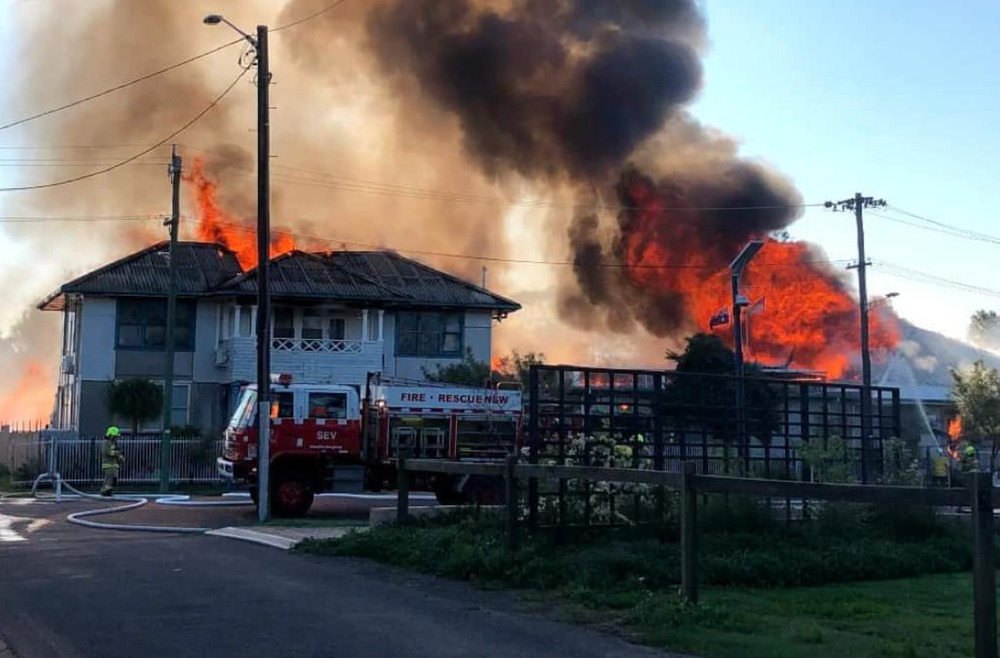National Asbestos Week shines light on the hidden killer in our homes
Laura Williams
22 November 2021, 8:10 PM
 While asbestos isn't harmful when left untouched, renovations are a sure way to disturb the deadly fibres.
While asbestos isn't harmful when left untouched, renovations are a sure way to disturb the deadly fibres.Almost three months after the blaze that took down the iconic Diggers on the Darling building in Bourke, asbestos from the building continues to hinder the clean-up process.
As National Asbestos Week commences, the asbestos-riddled building has become the prime example of the contaminant that lurks in building across the region and the lengthy process required for its safe removal.

- The presence of asbestos has delayed the clean-up of the site of the former Bourke's 'Diggers on the Darling' RSL Club which burned down in September this year.
Kicking off yesterday Monday November 22, National Asbestos Week serves as a reminder of the hidden killer, a carcinogenic that kills approximately 4,000 people per year.
Along with sourdough baking and home workouts, the pandemic was a catalyst for thousands of home renovations, with amateurs across the country taking to DIY projects in their homes.
Experts have warned that any home that was built or renovated prior to 1990 is likely filled with asbestos, a prominent element in building materials at the time, particularly in laundries, kitchens, and bathrooms.
Asbestos Safety and Eradication Agency CEO Justine Ross said that being asbestos aware before starting any DIY work could be a life-or-death situation.
“Asbestos is not dangerous if it is in good condition and undisturbed. But it can be easily disturbed when doing renovations, home improvements and maintenance, and the Asbestos Safety and Eradication Agency is concerned to ensure that all Australians have the knowledge they need to stay safe,” Ms Ross said.
Research conducted last year into Covid-DIY revealed that 1 in 5 DIYers encountered asbestos, but only half sought any kind of professional help to deal with it.
Of more concern, a third admitted to disposing of the asbestos improperly, some using their own household bin.
Perhaps most shockingly, a common response was DIYers using their neighbour's bin to dispose of the deadly fibres.
“Just like plumbing and electrical work, asbestos removal – or jobs around the home that might uncover asbestos – are jobs best left to the experts,” Ms Ross said.
Despite being illegal now, between 1920 and 2003 there were 12.8 million tonnes of asbestos-containing material used in Australia. It is estimated that 90 per cent of that was cement building materials and cement water pipes.
Following the tragic Bourke fire, Environmental Protection Agency (EPA) Joshua Loxley attended the scene with other emergency services to assess the risk, where an abundance of asbestos was identified.
“It is always sad to see a cultural and historic loss from an incident like this, especially at a time when COVID-19 is creating anxiety and challenging the community,” Mr Loxley said in his report of the scene.
“However, the most important thing for us was to make sure there was no harm from contaminants in the aftermath of the fire, and that the site had been secured, ready for the waste to be disposed of at Bourke Waste and Recycling Centre,” he said.
According to Bourke Shire Council General Manager Mark Riley, safe preparation and precaution around the waste meant that cleaning processes could only begin this month.
“In matters such as this, it does take time to get everything in order in readiness for the site to be remediated,” Mr Riley said.
As buildings from the era begin to deteriorate and require upgrades, the disturbance of asbestos in the building may be inevitable, making knowledge of asbestos crucial for homeowners.
Most shires within the Western Plains can dispose of asbestos to varying capacities.
In some instances, licensed asbestos professionals are required, including for the removal of all friable asbestos and more than 10 square metres of non-friable asbestos.
Exposure to asbestos has been linked to several life-threatening diseases including pleural disease, asbestosis, mesothelioma, and lung cancer.
Visit Asbestos Safety to find out how to properly deal with asbestos in the home, workplace, and environment.